On the Land Problem, Peasant Class and Agrarian Revolution
This Q & A on the land problem, peasant class and agrarian revolution in the Philippines is a follow-up to the just-concluded three-part series of web forums on Philippine Society and Revolution at the National Democratic Online School (Mga Serye ni Tito Jo). In this article, Jose Maria Sison focuses on 17 points to further elaborate on the Special Course on the Peasant Movement.
Prof. Sison, who is founding chairman of Kabataang Makabayan (Patriotic Youth, founded in 1964), posted this Q & A article on his Facebook page on 5 July 2020. PRISM is posting the full text of the article with only minor format adjustments, not only as educational material for Filipinos, but also as reference material for other progressive mass activists and educators in various countries facing similar social conditions.
ON THE LAND PROBLEM, PEASANT CLASS AND AGRARIAN REVOLUTION
By Jose Maria Sison, Founding Chairman, Kabataang Makabayan
in Special Course on the Peasant Movement, National Democratic Online School, Mga Serye ni Tito Jo
5 July 2020
1. Who are the farmers and what is their significance in the Philippine society?
Jose Maria Sison (JMS): In English, one can play loose with synonymous terms like peasant, farmer or planter for someone who tills the land or in Tagalog, magsasaka, magbubukid or magbubungkal, in the same manner as you may alternately use the word worker, laborer or wage-earner for someone who sells his labor power and gets wages.
But from the time of Marx to the present in class analysis, in the English language, the word peasant is used instead of farmer. The word peasant has the nuance of being a serf in medieval or feudal times or being in the main landless and poor tillers of the land. The word farmer carries the nuance of being the owner of the land he tills or farms. Even landlords and farm capitalists sometimes call themselves farmers or planters but never do they call themselves peasant.
We notice that the Philippine reactionary government uses the word farmer to conjure the illusion that its bogus land reform program is a success and that the predominantly poor peasants, among the peasants of various social strata, have disappeared and have become owner-cultivators or owner-farmers. There is a deliberate attempt to diminish drastically or even make the peasant class disappear not only linguistically but also statistically.
In an earlier study session, I have pointed out that the Philippine reactionary government has reduced the peasantry to only 22.9 per cent of the labor force of 45 million being in agriculture and the rest are in the service sector at 58 per cent and in industry at 19.1 per cent. With 77.1 per cent considered as working class, that makes the peasant class quite a small minority. The truth is that the industrial proletariat is far smaller than the peasant class but the reactionary economists and statisticians detach the traditional seasonal farm workers and odd jobbers from their peasant base.
The understatement of the size of the peasantry and the undervaluation of the share of agriculture at only 7.4 per cent of GDP are calculated to conjure the illusion that the Philippines has become a newly-industrializing economy and that the diminution of the peasantry has drastically reduced the ground for maneuver in the protracted people’s war in the new democratic revolution. We cannot rely on the false categories and false estimates of the reactionary government. Original social research must be done to establish the facts.
The Philippine reactionary government takes advantage of the fact that the neoliberal policy has bloated the service sector with extreme and unsustainable debt financing for private construction and the importation of non-reproducing equipment and consumer manufactures and dishonestly counts as employed in the service sector the great mass of odd jobbers from the surplus rural population in the so-called informal economy. And practically those recognized as peasants are merely the family heads as if they were workers individually registered and employed by non-agricultural enterprises, like the diminished number of regulars and the far greater number of casuals or 5-month or seasonal contractuals.
The peasant class, mainly the poor and middle peasants, is highly significant in Philippine society because it comprises the biggest socio-economic class and provides the food for itself and for the whole country and certain products for local processing and for export. It is the largest bloc of the most exploited and oppressed people and it is still the base of most of the urban and rural oddjobbers and unemployed who have increased in number due to the lack of industrial development and the dwindling of regular year-round employment in every sector of the economy. The peasant class is so important because it is the main force of the people’s democratic revolution through people’s war in the countryside until the revolutionary forces become strong enough to seize political power in the cities.
2. Can you discuss the different strata within the peasantry? There are farmers who have managed to own a few hectares of land and who have a more comfortable life than the poor farmers. How did these different strata emerge?
JMS: There are three strata of the peasant class: the poor, middle and rich peasants. The poor peasants do not own land or have inadequate land and have to become tenants of the landlords and augment their income by being farm workers seasonally for the upper strata of the peasantry and for the plantations or do odd jobs in the urban areas. The middle peasants in the main own and till enough land for their own subsistence, although the lower middle peasants also serve as farm workers for others or do urban odd jobs. The rich peasants own more than enough land for their subsistence but they still till the land and hire farm workers as well as use their surplus income to engage in trading or small-scale enterprise or buy additional land.
The fact that the poor peasants are the majority of the peasants indicates that they have originated from the feudal system and that they continue to exist because of the persistence of feudal and semifeudal relations of production and conditions in the countryside. Even when the landed estates of landlord families become fragmented from one generation to another, the landlord class persists because some of the heirs expand their inherited shares and new landlords keep on arising and expanding their estates through purchase and the alienation of land from the public domain. The middle and rich peasants exist for various reasons but are generally manifestations of the transition from feudal to semifeudal conditions or the combination of both. The rich peasants are sometimes called the rural bourgeoisie for owning property and using its surplus income to hire farm workers and engage in some small enterprise and side occupation or in money-lending.
3. One of the main problems that the peasants face is the problem of land ownership. They don’t own the land that they till. What is the origin of this land problem and how bad is it?
JMS: Even before the coming of Spanish colonialism, aside from communal land ownership, there was already private ownership of land by the ruling families in the Islamic sultanates in southwestern Mindanao and in the patriarchal slave system in other parts of the archipelago. The aliping sagigilid and aliping mamamahay were put to work on the land by their owners. There were those who acted as tenants as well as those who worked on certain lands for the benefit of landlords in exchange for rations or crop share.
But the Spanish colonialists were the ones who systematically imposed feudalism on the widest scale. It started with the encomienda system, which was a grant of extensive lands to the Spanish conquerors and bureaucrats for the purpose of tribute collection. The churches also accumulated land where they were established. But the largest church lands owned by the Spanish religious orders arose in connection with the production of export crops, such as tobacco, hemp, sugar, indigo and so on. At the same time, the domestic ruling class of landowning families called the principalia increased their landholdings as domestic and foreign trade expanded from the late 18th to the 19th century.
The system of haciendas was established during the Spanish colonial period. The land reform undertaken by the US colonial regime against friar estates was just enough to promote a semifeudal economy and allow the peasants to move freely. Although the land reform was carried out with the avowed purpose of distributing land to the tenants, who could not afford the redistribution price, the land ownership shifted only to the landlords and certain corporations. And the money paid to the religious corporations was invested in the big comprador Bank of the Philippine Islands.
4. What forms of exploitation and oppression do the farmers experience through this land problem?
JMS: The main form of exploitation in the feudal system is the exaction of rent by the landlords from the tenants and making the latter perform menial service to landlord families and unpaid labor on certain occasions, such as church and community festivities. Because the arable lands are already designated or titled as private property of the church or certain families, the impoverished landless peasants have to become tenants or farm workers on the land of the landlords and the rich peasants.
During the Spanish colonial period, the religious corporations and the landlords were notorious for abusing their political power by grabbing the land even of the freemen or freeholders of land. The colonial state also required the peasant masses to render polo y servicio (public works) or else pay fines. And the triumvirate of the parish priest, gobernadorcillo and the civil guards made sure that the landless peasants could not escape their service of forced labor.
5. Who are the main feudal landlords and how did these feudal landlords accumulate and monopolize these lands?
JMS: First, among the native population, the religious corporations and native landlords had political power and could arbitrarily grab land from the powerless peasants. Second, the landlords bought more land at dirt cheap prices with the rent paid by tenants. Third, they engaged in merchant-usury operations by which the indebted peasants lost their land. The feudal forms of exploitation have extended to current times.
The gobernadorcillos always came from the landowning families (principalia). They could arbitrarily claim, title and put under tax declaration any large area of land legally considered as royal or public domain. This practice of landgrabbing has continued until now under various guises, such as pasture leases preparatory to privatization, logging concessions, forest management agreements and so on.
6. The agriculture in the Philippines is still backward. Why are the landlords and the government not interested in developing tools and machinery to improve the way of farming? And how does this affect the farmers?
JMS: So long as there is no genuine land reform or agrarian revolution and no national industrialization, the landlords will continue to exist, keep on accumulating land with the rent paid to them and retain the backward technological level of agriculture. There is no other way for most landlords to do but keep on collecting rent and practising usury and using their income to accumulate land. They have no interest in raising the technological level of agriculture because the landless peasants abound as cheap source of labor power.
However, the biggest landlords engage in export-crop production in plantations and become big comprador bourgeois by performing the role of trading and financial agents of foreign monopoly capitalism. They own haciendas as well as export-import companies and commercial banks like the Ayalas and Cojuangcos. You will notice that the biggest comprador bourgeois are also the biggest landlords or have huge interests in haciendas. The late Danding Cojuangco owned the big comprador San Miguel Corporation and also several haciendas in different parts of the country.
They adopt some amount of mechanization but they do not go so far as to use harvester combines because there is an abundance of the traditional seasonal farm workers, they thus save on capital outlays by using the extremely cheap labor power of the farm workers and they are also afraid that social discontent would burst out if these farm workers are displaced by machines without any industrialization to absorb the displaced. During the time of Marcos, Benedicto wanted the sugar landlords to buy harvester combines to replace the farm workers but they thought it was cheaper to hire farm workers and avert intensified social conflict.
7. How do Landlords, Big Business Owners and Imperialist Agri-Corporations team up to further profit from the exploitation and oppression of the peasants and farm workers?
JMS: The teaming up of the landlords, the big compradors or big business owners and the imperialist agri-corporations is most amply manifested in the operation of haciendas by the landlords for the production of export crops for sale to the imperialist agri-corporations. The landlords get their profits from the exploitation of the peasants and farm workers. They have big comprador export-import trading firms to realize profits from trade with the foreign agri-corporations. With their foreign exchange income from the sale of export crops, they import to the Philippines foreign manufactures for profitable sales to domestic wholesalers. They also own the big comprador banks for making the letters of credit in export-import transactions and thereby earning interest.
8. What ways do the landlords use to maintain their monopoly of land?
JMS: In the history and current circumstances of the Philippines, the landlords acquire and maintain their monopoly of land by having political power in localities and at higher levels of the reactionary government. First, they can gain control over vast tracts of land from the public domain under various legal pretexts and then acquire private ownership of the land under the pretext of having developed them. Second, they have devised inheritance laws so that land ownership is passed on from one generation to another within the same family and through inter-marriages of cousins and with other landlord families. This is what you may call upper-class or aristocratic prostitution of women. Third, the income drawn by the landlords from land is used to acquire more land.
9. How do imperialists benefit from feudal exploitation of the farmers and what is its role in preserving feudalism?
JMS: The imperialists benefit from the feudal exploitation of peasants and farm workers by buying the cheap export crops from the landlords and selling the manufactures to the big comprador-landlord trading firms. Aside from collaborating economically, the imperialists and landlords also do so politically and militarily. The imperialists provide military support to the big comprador-landlord-bureaucrat-capitalist state and the landlords rule the localities and provide the political base for said state. The imperialists are the sources of the weapons used by the reactionary state in the futile campaigns to destroy the revolutionary movement and preserve the feudal and semifeudal system of exploitation.
10. What kind of policies and attitude does the government have in resolving the land problem?
JMS: The reactionary state or government is the class rule of the big compradors, landlords and bureaucrat capitalists. They are fundamentally against genuine land reform aimed at solving the land problem. They keep on carrying out one bogus land reform after the other. But because the land expropriated from certain landlords is overpriced, the poor peasants cannot afford to pay for the exorbitant redistribution price of the land. The land usually ends up in the hands of landlords and other entities who acquire the land for real estate development and other non-agricultural purposes.
11. The Republic of the Philippines has created policies and institutions that they say will help the farmers. For example, the CARP and CARPER, DENR, DAR. Do these policies and institutions really help farmers?
JMS: These policies and institutions do not carry out or promote genuine land reform and rural development for the benefit of the peasant masses. They benefit the landlords, big compradors and bureaucrat capitalists.
Follow up Q: Does this mean the government of the Republic of the Philippines are part of the problem of the farmers that further oppresses and exploits them?
JMS: The reactionary government belongs to the landlords and other exploiting classes and is therefore a big problem to the peasant masses because it is the instrument of the landlord class for ensuring the oppression and exploitation of the peasant masses.
12. How is the struggle of fisherfolk related to the struggle of the farmers?
JMS: The struggle of fisherfolk is related to the struggle of the peasants. The fisherfolk are subject to exploitation and oppression by owners of fishpens who play a role similar to that of the landlords and by owners of large fishing boats or trawlers who act like hacienda owners and farm capitalists. Sometimes, peasants also augment their income as fisherfolk in rivers, lakes and marine coasts and suffer the same exploitation and oppression suffered by fisherfolk.
13. Can you discuss how the (a) Military, (b) Church, (c) Justice System, and (d) Reactionary Associations contribute to the exploitation of the peasant class?
JMS: a. The military and the police are bound by the state to protect the landlords against the peasant masses demanding genuine land reform or fighting for agrarian revolution. They target the peasant leaders and mass activists in counterrevolutionary campaigns of suppression.
b. The dominant church is an institution that owns land and is socially close to the landlords who are its big donors. Many of the church leaders are conservative and support the landlords even as quite a number of them have social conscience, belong to the Christians for National Liberation and support the peasant masses because these are poor people who deserve social justice.
c. The justice system is based on laws designed to serve the interests of the big comprador-landlord state and the exploiting classes of big compradors and landlords against the toiling masses of workers and peasants.
d. Reactionary associations are instruments of the landlord class and other exploiting classes to control and influence the exploited classes in favor of the exploiting classes. They uphold the privilege of the landlord class to exploit the peasant masses.
14. The farmers in Hacienda Luisita for example have exhausted all their means to fight for their lands. They have filed cases in the Supreme Court, conducted mass protest, joined dialogue even with the late Danding Cojuangco, and have also suffered a terrible massacre called Hacienda Luisita Massacre. Despite this, almost all of them still do not have their own land. These struggles are experienced not just by the Hacienda Luisita farmers but also farmers all over the country. What choice do you think they have left and how can we, regular citizens, help them with their struggle?
JMS: The farmers in Hacienda Luisita must continue to fight for their rights and interests legally and politically. I would not be surprised if some of them join the armed revolutionary movement in order to be able to undertake effective actions against those who frustrate or violate their rights. The revolutionary movement has supported the struggle of the peasants and farm workers in Hacienda Luisita and elsewhere. We can and should support their struggle by exercising our freedom of speech and assembly. We should do the same in favor of the poor peasants and farm workers all over the country.
15. What is the solution to the land problem?
JMS: The revolutionary movement offers the best and most effective solution to the land problem in the Philippines. The Communist Party of the Philippines declares in its Program for a People’s Democratic Revolution that the main content of the democratic revolution is to satisfy the peasant hunger for land through agrarian revolution. It provides two stages in the agrarian revolution.
The first stage is to carry out the minimum land reform program where the revolutionary movement has just started to take roots among the peasant masses. It means reducing the land rent, eliminating usury and reducing interest rates, raising farm wages, setting fair prices for farm products at the farm gate and raising production in agriculture and sideline occupations. However, whenever already possible, the land grabbed by landlords and corporations can be taken back and returned immediately to the peasants and indigenous communities. The land of despotic landlords can also be confiscated and distributed free to the peasants.
The second stage is to carry out the maximum land reform program where the revolutionary forces, especially the people’s army and the organized masses through their local organs of political power, have the capability to do so on a wide scale. It means realizing the agrarian revolution. It consists of confiscating the land, distributing it free to the peasant masses, setting fair prices for the agricultural products at the farm gate and raising production in agriculture and sideline occupations through rudimentary cooperation among the households in a community. The reaction of the landlord is expected to rise. And the peasant masses are ready to fight and win. The people’s court is ready to try despotic landlords and mete out severe punishment to those with blood debts.
16. How do we unify the different strata under the peasant class?
JMS: There is a general revolutionary class line for the anti-feudal united front to unify the peasant class. It is for the working class and the CPP to rely mainly on the poor peasants and farm workers who need the agrarian revolution most, win over the middle peasants and neutralize the rich peasants in order to isolate and destroy the power of the landlord class, especially the despotic ones who use violence against the peasant masses.
Care is taken not to offend but not to kowtow to the rich peasants. They are allowed to keep their extra land and income above subsistence if they comply with fair requirements of the revolutionary movement. A distinction is also made between despotic landlords who commit crimes against the people and enlightened landlords who comply with the policy of land reform or agrarian revolution of the revolutionary movement.
17. What is the agrarian revolution and how is it being waged?
JMS: At the moment, the first stage of the agrarian revolution is being carried out in most areas of the revolutionary movement. But land grabbed by landlords and corporations from the indigenous communities and the poor peasants are returned to them as soon as possible. And the land of despotic landlords is confiscated from them and distributed free to the poor peasants. It is in the second stage of the agrarian revolution when the land is confiscated from all landlords and is distributed free to the poor peasants and the lower middle peasants.
The agrarian revolution is made possible by the people’s war along the line of the people’s democratic revolution.
In peace negotiations with the reactionary government, the National Democratic Front of the Philippines has offered a program of genuine land reform and national industrialization as substantive socio-economic basis for a just peace agreement. The program can be financed by the trillions of US dollars worth of gas and oil that can be extracted from the exclusive economic zone of the Philippines in the West Philippine Sea. But the Duterte regime has refused the offer of the NDFP and has decided to terminate the peace negotiations. It thinks that it can destroy the revolutionary movement in order to satisfy US imperialism and at the same time enrich the Duterte dynasty and its Davao-based Chinese cronies by selling out to Chinese imperialism the sovereign rights of the Filipino people in the West Philippine Sea.###
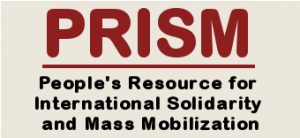
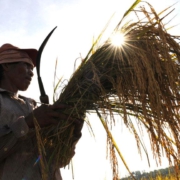
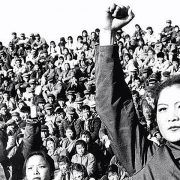
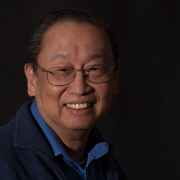
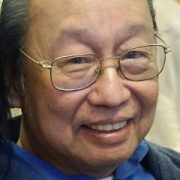
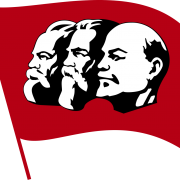
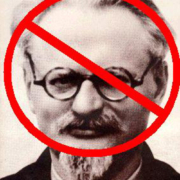


Leave a Reply
Want to join the discussion?Feel free to contribute!